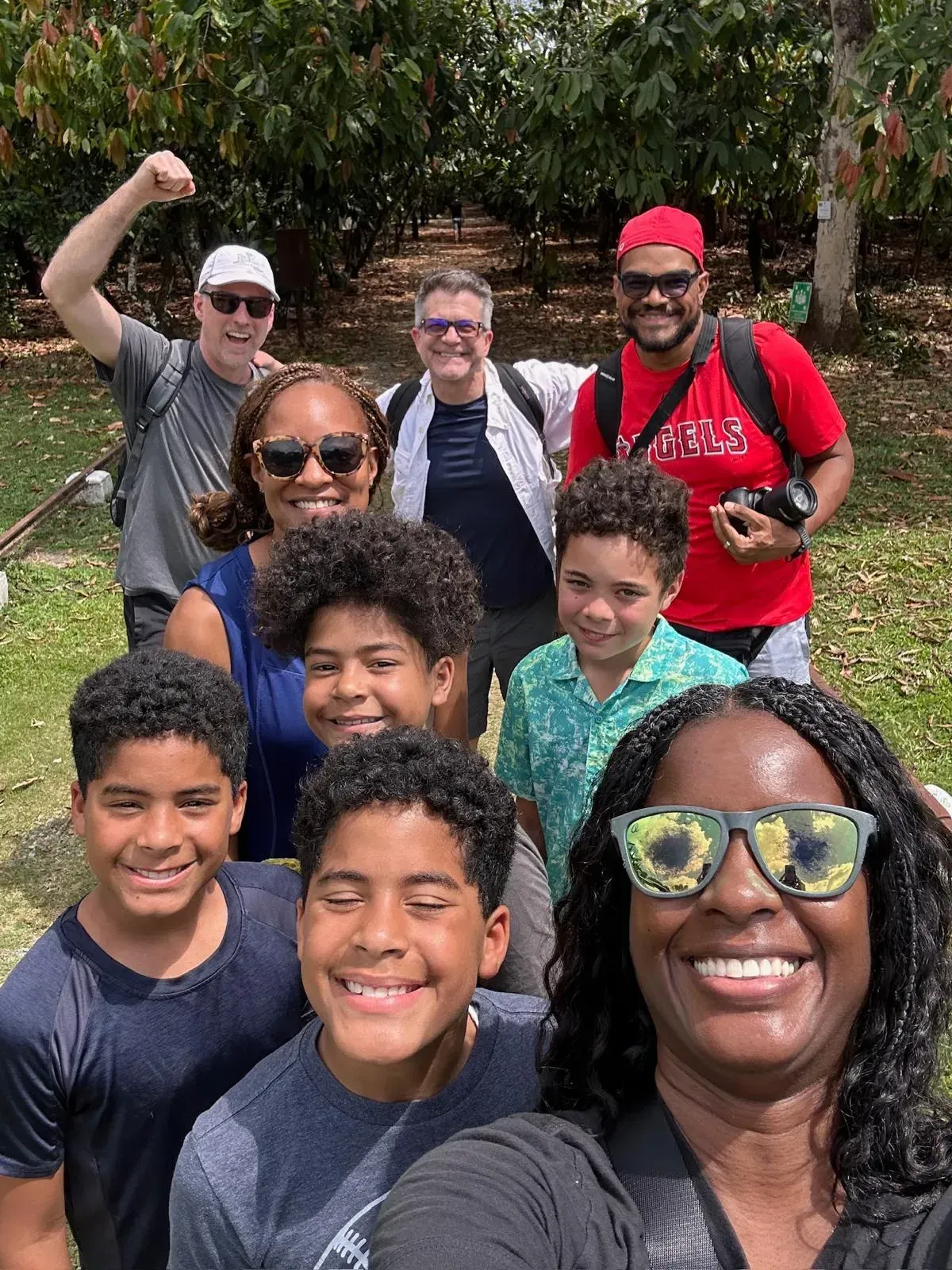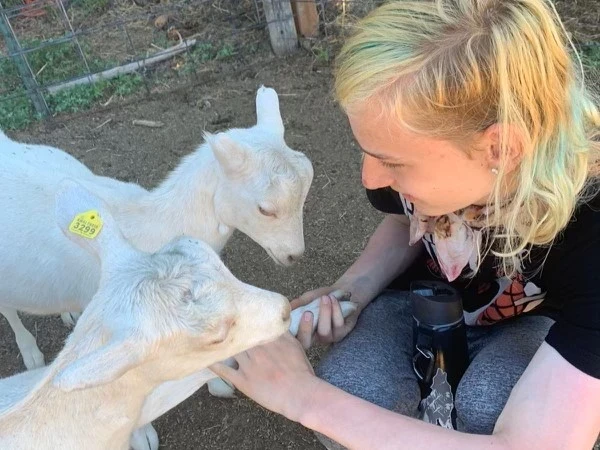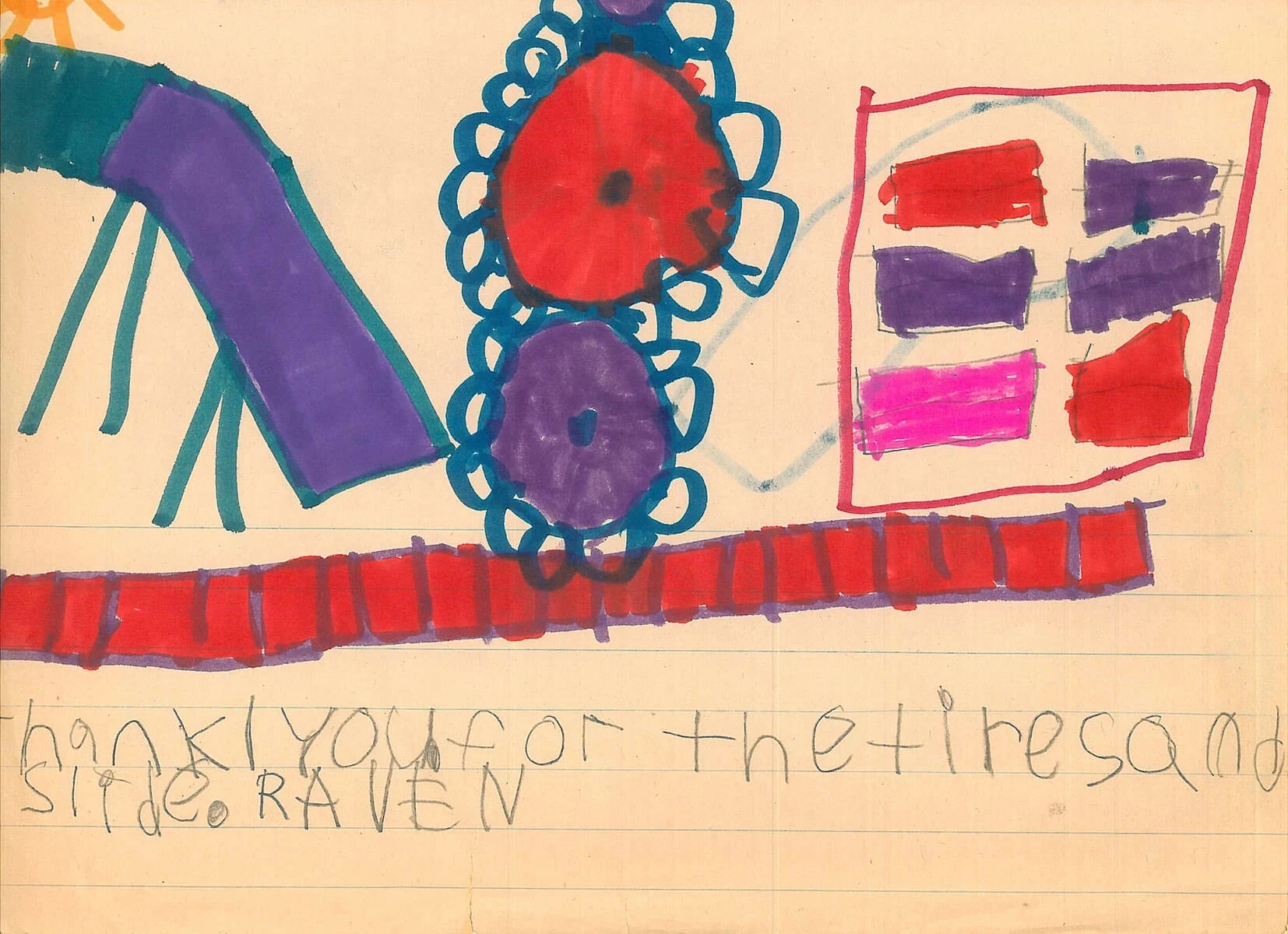From Calm to Quake
South-central Alaska is filled with quietude in the late fall, especially in the small Athabascan village of Mentasta. The salmon runs are over, and the wood has been chopped and stacked for a long winter. Days become shorter, approaching their Solstice nadir—just under 5 hours of low-angled daylight.
On November 3rd, 2002, at just after one in the afternoon, that wintry Alaskan stillness was rocked by a magnitude 7.9 earthquake. Felt throughout the state, into Canada, and south to Washington, the quake created ripples in bodies of water as far away as Texas and Louisiana. Measured as the largest inland earthquake in North America in nearly 150 years, the Denali Fault earthquake was similar in magnitude to the 1906 San Francisco quake, which killed between 700 and 2800 people. Yet because it struck in the remote north, far from centers of infrastructure and population, no lives were lost on that day in November.
The remote community of Mentasta, alongside neighboring native villages of Tetlin and Slana, and the towns of Glenallen and Delta Junction, was heavily impacted. The seismic event leveled a large portion of the 100-person town, which sits at the base of the rugged, glaciated Wrangell Mountains. Although the damage to many buildings was mitigated due to the malleable properties of log cabin construction, nearly all the locals’ homes and outbuildings would need to be repaired. The historic Mentasta Lodge suffered almost half a million dollars in damage. Local entry roads were impassable to emergency vehicles, phone lines were down, and the community was cut off from the outside world.
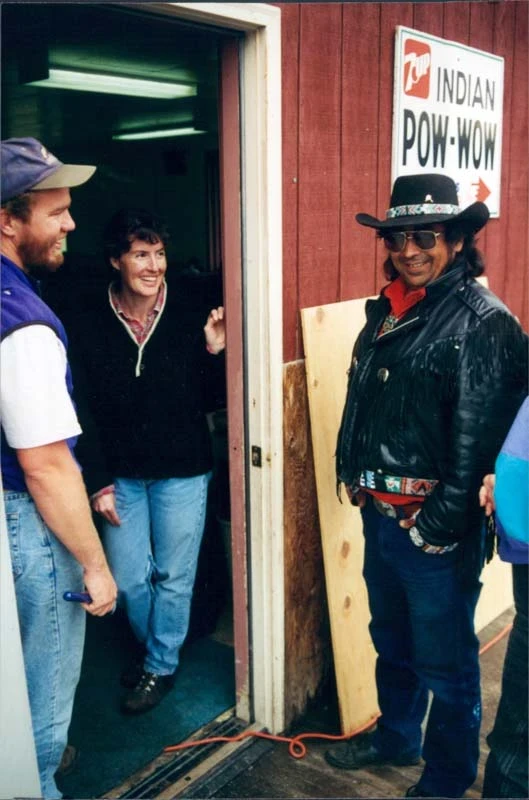
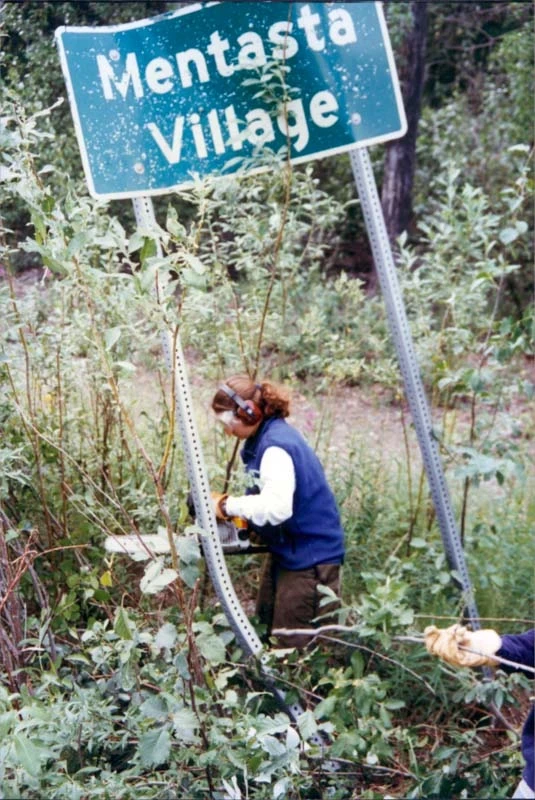
Only two structures survived the 2002 earthquake without significant damage. The Athabascan Elder Youth Center was completely intact, and this community center naturally became a gathering place in the hours, days, and weeks following the quake. Locals sought shelter within its walls while aftershocks continued to rock the area. It also functioned as the school while the community of Mentasta rebuilt. A Mentasta resident, expressing their concern, noted that “after a week of aftershocks, I am still sleeping on the office floor by the door. I don’t plan on moving back to my bed in the loft ‘til the earth quits rocking.”
In August of 2002, just months before the massive November 3rd earthquake, the VISIONS Alaska summer program youth volunteers and staff had helped put the finishing touches on that same community center. The building would soon become one of the sole safe spaces for the Athabascan locals in a time of trauma and necessity.
The Athabascan community has lived among the natural bounty of the Tetlin River in Southeast Alaska for a millennium or more. Customs of culture, survival, and stewardship have been passed on throughout generations. Elders share the knowledge of traditional fishing and hunting skills, as well as meaningful songs and stories, with youth. The Athabascans have learned to endure and thrive in the challenging climate over centuries. In recent years, indigenous Alaskans have also had to survive onslaughts to their land, their rights, and their way of life. Today, many villages in the Alaskan bush must work hard to balance cultural and economic survival.
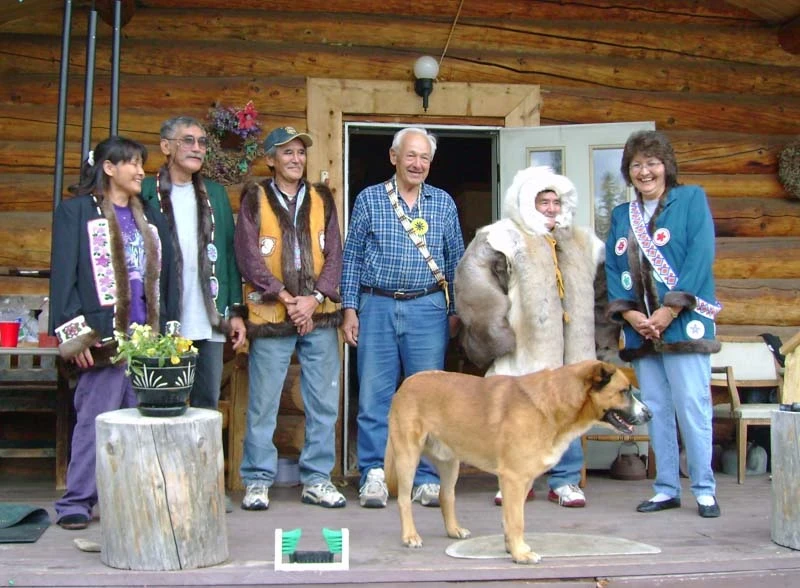

Local Legacy of Meaningful Volunteer Service
VISIONS Service Adventures began work in Alaska in the summer of 1995. From its onset, Alaska youth service program volunteers had the honor and responsibility of assisting with community needs. Each year, the program focuses on service projects, identified and coordinated by local partners with an intimate, firsthand knowledge of what best serves their community.
Volunteer youth are immersed for nearly a month in a remote, yet welcoming, Alaskan village, surrounded by the lush green and midnight sun of subarctic summer. Recent projects have included house maintenance for village elders, building smokehouses to preserve meat for the long winter and woodsheds to store the villagers’ primary fuel source, engineering wheelchair ramps for residents in need, and assembling a “fish weir” (or traditional fish trap) to catch salmon as they swim upriver to spawn.
With 25 years of hands-on work taking place in partnership with community neighbors, VISIONS service projects in remote Alaskan communities have built more than just enduring physical structures. The work has created long-lasting human connections, often across vastly different backgrounds.
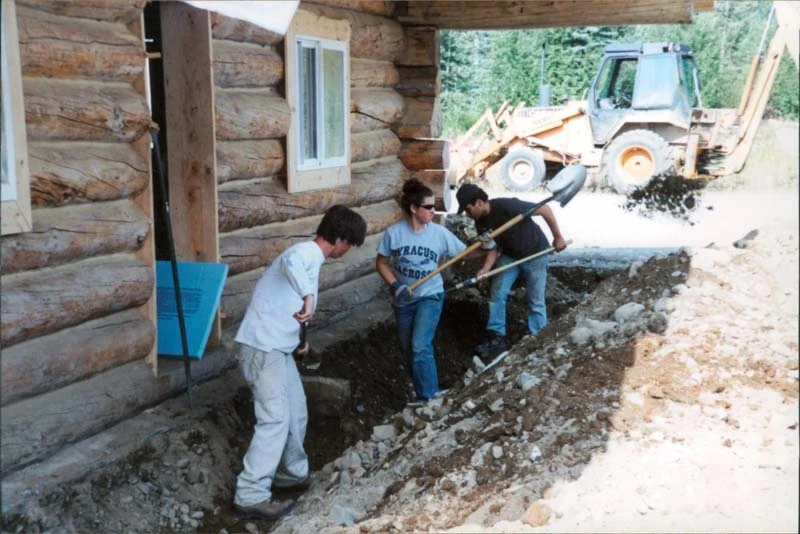
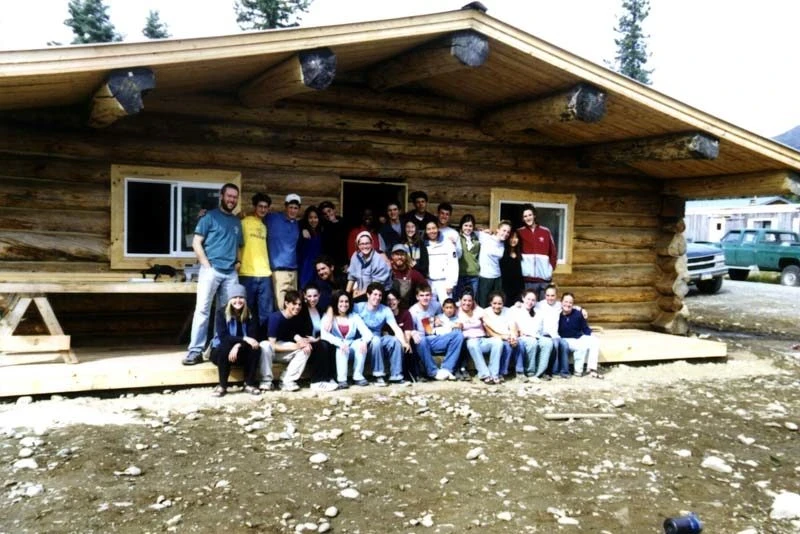
Mentasta, Alaska Community Center Construction
Brad Hubbard, a longtime director of the VISIONS Alaska program in Mentasta, was also an expert carpenter who arranged and led many local construction projects. Under Hubbard’s guidance, construction began on the Athabascan Elder Youth Center in the summer of 2000.
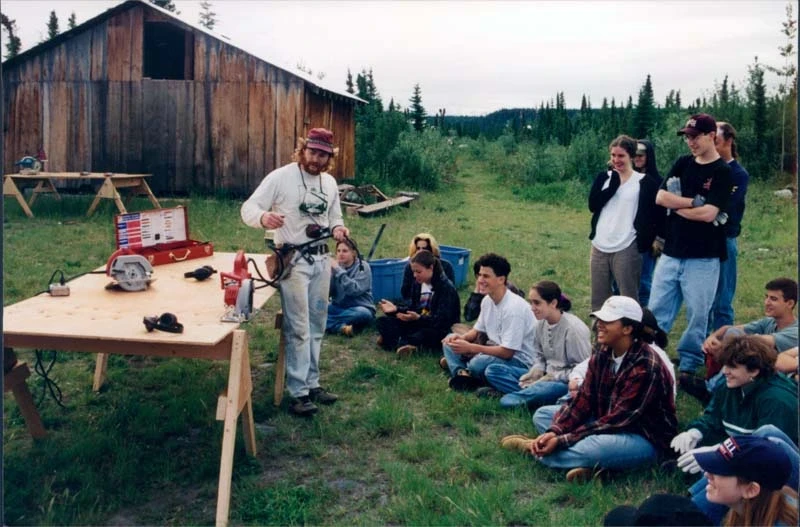

The project was a dynamic undertaking with significant scale. Visiting youth volunteers helped cut local timber with chainsaws, then milled the logs using a portable sawmill with Brad Hubbard supervising and instructing. The village of Mentasta, like much of interior Alaska, is located on permafrost. Because thawing and refreezing permafrost can crack typical concrete foundations, students used a special construction technique enabling the structure to be built directly into the ground. Students also did the chinking, which seals logs against the elements, but the work sealed in more than construction skills. After completing the structure that August, a young volunteer reflected, “I have done community service trips before, but this summer was different. Although we didn’t see how the teen center would be used, it was incredible building an entire building knowing that the community will definitely benefit from it.” Her insight would become a reality in a few short months, when the building proved to be a true shelter for a community in need after the Denali Fault quake.
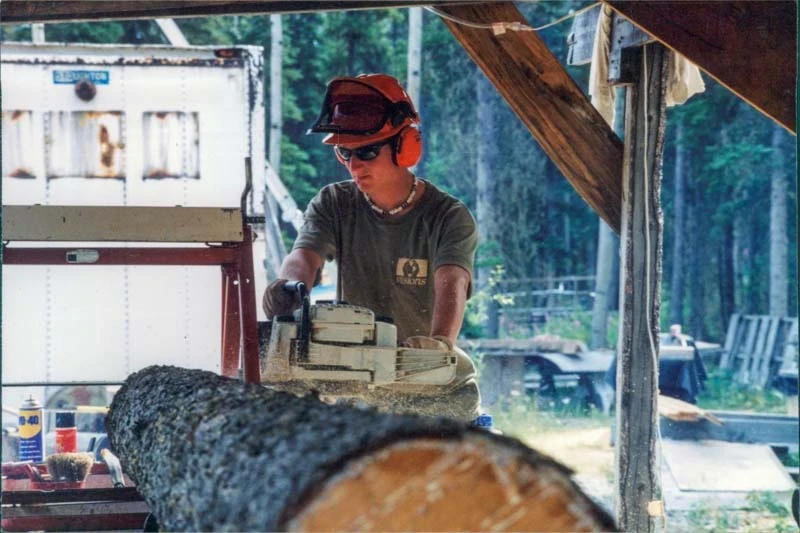
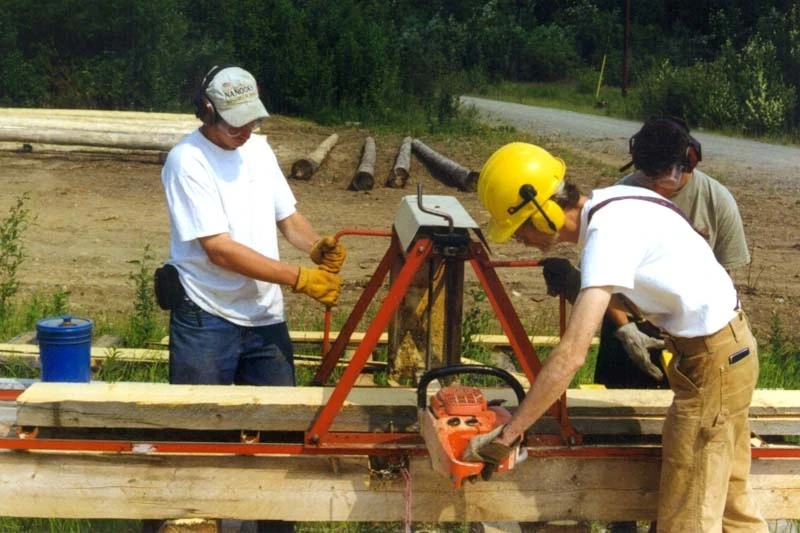
25 Years of Youth Volunteer Work in Alaska
VISIONS upcoming summer trip to Alaska marks 25 years of local service, enduring relationships, and changed lives. This year’s Alaska program youth volunteers will spend 25 days in Tetlin Village, AK (Mentasta neighbor), practicing carpentry and power tool skills, and exploring the beautiful wilderness through hiking, ice climbing, canoeing, and backpacking. As a volunteer program participant described, “imagine mountainous expanses of rolling green with the occasional glacier and no people for miles.”
The heart of what makes the VISIONS Alaska program special is the relationships youth form with local Native Alaskan community members. Participants learn time-honored bushcraft from native elders—weaving birch, building fish traps and catching fish, and curing and preparing big game and salmon all contribute to the transformative experience of living off the land. Service project participants connect with, learn from, and help support the Indigenous Athabascans who call wild Southcentral Alaska home. And in turn, the generosity, hospitality, and profound wisdom of these local hosts leave lasting impacts. The program goes beyond cultural immersion, to genuine service, fostering a respect for cultural differences while breaking down barriers between self and other. Youth participants experience warm welcomes, authentic connections, mutual respect, and opportunities for shared joy.
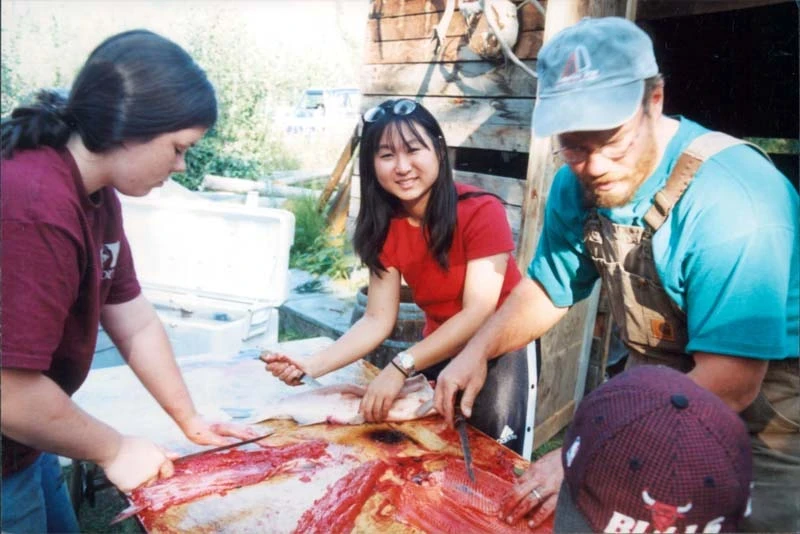

As one Alaska program volunteer alum shared, ”I gained so much from talking to the people who live in the village and really soaked up the culture. Our experience… really taught me about the fight that these people have put up to stay connected with their land and their culture… I have become very aware and motivated to make sure that they will always be able to keep their traditions. I also learned that you need to take every (or almost every) opportunity that comes your way. I have so much more respect for nature in general… I greatly miss [my time there.]”
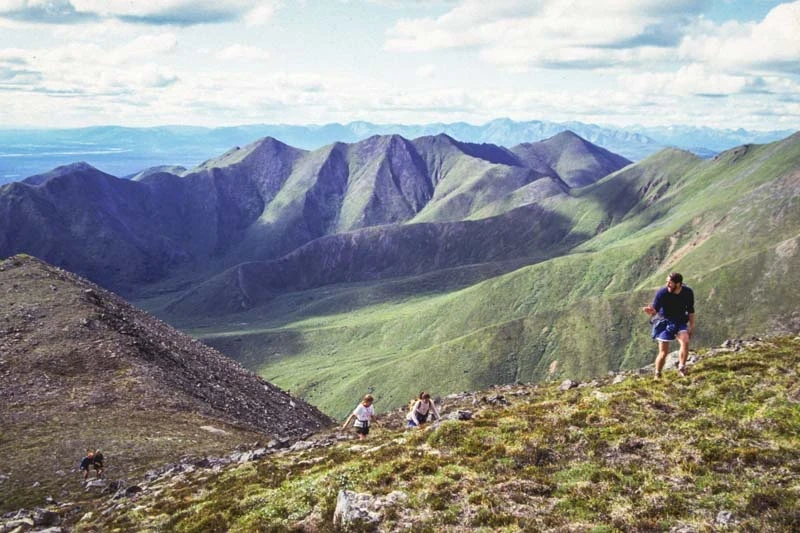
Alaska Summer Program 2020
To learn more about the 25th year of our Alaska Program, click here. From community construction projects to outdoor explorations and one-on-one conversations with village elders, this summer’s youth program volunteers can look forward to uniquely meaningful experiences in the Last Frontier.
Real adventure, purposeful service, and the trip of a lifetime await in Alaska.
Max had the most wonderful experience in Alaska. He was nervous before he left and came back so thoroughly happy and more mature. He felt the leaders were fantastic and enjoyed both the work and excursions. The friendships he made were strong and meaningful. We are grateful to the program for sending back both of our kids happier and more self-confident and self-aware than when we sent them off.



